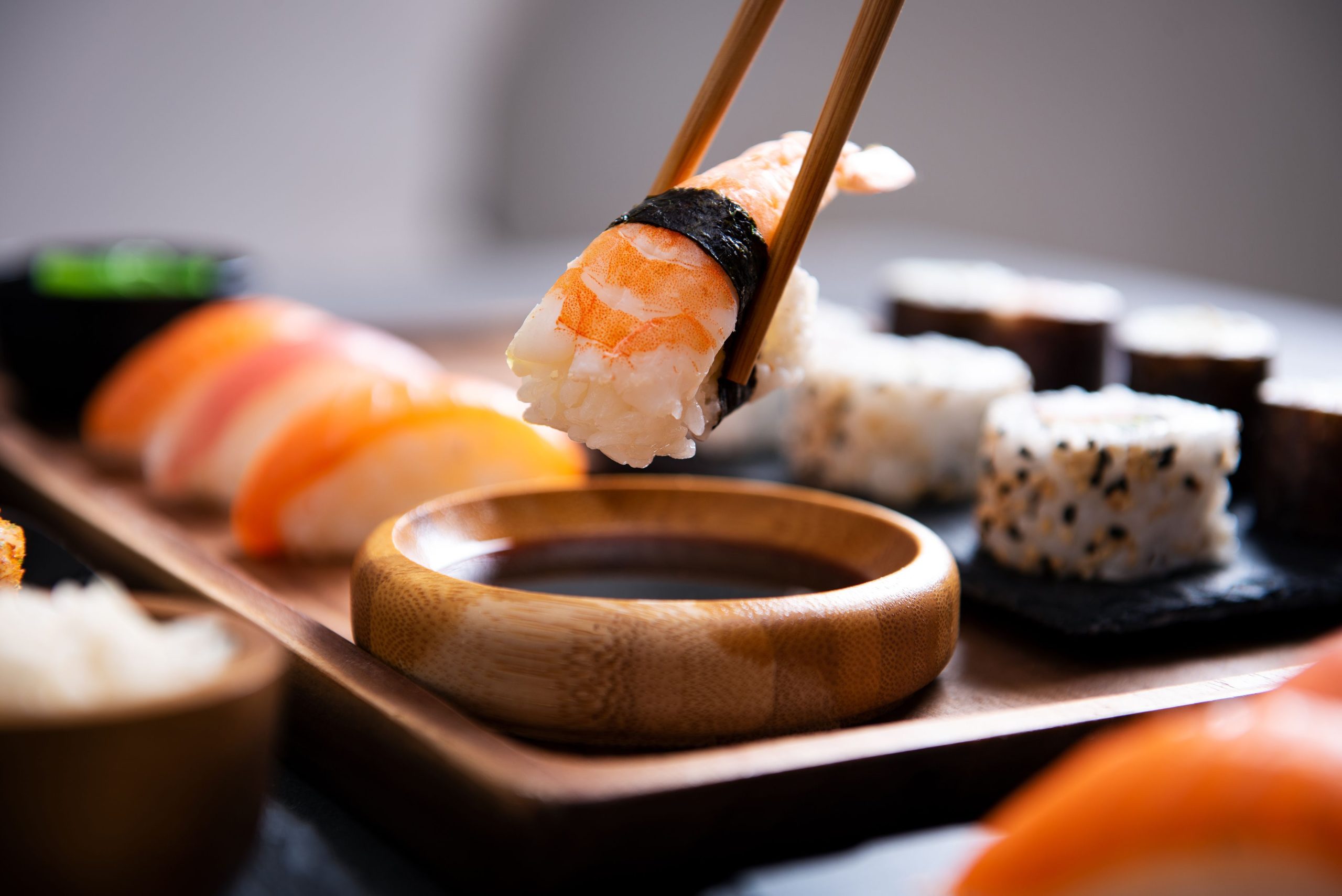However, you may spend hours in an elevated omakase restaurant sampling some of the world’s freshest and most delicious seafood on single-bite platters. On the other hand, in an all-you-can-eat sushi restaurant, you may choose a wide variety of roles, including spicy tuna, shrimp tempura, and cream cheese, among others. Both experiences have their place and time, but they are entirely different regarding nourishment.
Sushi is defined by Merriam-Webster as “cold rice seasoned with vinegar, molded into any of different forms, and garnished notably with morsels of raw fish or vegetables.”. Yes, sushi can be made with almost any filling. Cucumber, avocado, & cucumber are all common ingredients in sushi, but they aren’t the only ones! Sushi with shrimp or tuna on top, California rolls filled with imitation crab, or seaweed-wrapped hand rolls stuffed with avocado and salmon are just a few options.

However, how healthy is sushi?
For sushi, it’s all about the ingredients. The mix of macronutrients (like protein) and micronutrients (such as vitamins and minerals) determines the dish’s nutritional profile. In general, though, a sushi dinner will include a few features.
You should order fish from various sources to acquire a wide range of nutrients from your sushi. Selenium in yellowfin tuna is 92 micrograms per serving, which is more than 167 percent of the daily intake. The National Institutes of Health say that selenium is a powerful antioxidant necessary for healthy reproduction, the generation of thyroid hormones, and the synthesis of genetic material.
In addition, the seaweed that is served with or along your sushi provides additional nourishment. Several antioxidants in kelp can lessen the risk of heart disease and alleviate oxidative stress. According to Manaker, nori, a seaweed source of iodine, may also be found in certain sushi variations.
Is sushi high in carbohydrates?
As Manaker points out, “Rice is a good source of carbs, which provides a pleasant surge of energy.” “Folic acid, as well as other B vitamins, may be added to rice, depending on the rice used.”
You don’t necessarily need to fret about blood sugar spikes and crashes while eating sushi, according to the author, Manaker, since the rice is already packed with protein and other nutrients. Your blood sugar levels are unlikely to rise too much since you have rice with high-quality protein and fat (both from fish).
How much food does sushi have?
If you’re going to eat sushi, Manaker recommends matching it with a salad (seaweed or otherwise) and a side of veggies. Add fiber, which aids satiety, as well asand other nutrients like vitamins and minerals to your diet.
Do you have to worry about the health effects of sushi?
Methylmercury, a heavy chemical associated with unpleasant side effects when taken in significant numbers, may be found in certain fish types,” explains Manaker. To avoid mercury poisoning, she recommends eating salmon and shrimp, both low-mercury options.
Freshness is essential in sushi because of the uncooked nature of the seafood. Sushi should be purchased from a trustworthy establishment, adds Manaker. It will have a more greyish hue and an overpowering fishy odor.

Conclusion
According to Merriam-Webster, sushi is “cold rice seasoned with vinegar, molded into any of several shapes, then decorated noticeably with bits of raw fish or vegetables.”. Yes, practically any filling can be used to make sushi. There are several more frequent components in sushi beyond cucumber, avocado, and cucumber. In addition, the seaweed that is served with or along your sushi provides additional nourishment. Several antioxidants in kelp can lessen the risk of heart disease and alleviate oxidative stress.
